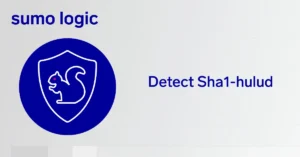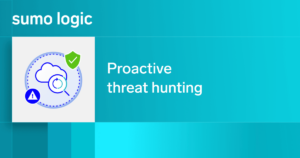
The question isn’t whether security information and event management (SIEM) is dead. The real question is whether the traditional model of SIEM still serves today’s defenders. Spoiler alert: it doesn’t.
Born from compliance needs and static rules, first-generation SIEMs provided log collection and correlation but not context. They buried analysts in noise and left threat detection slow, brittle, and expensive.
But that’s changing.
What’s emerging now isn’t just a better SIEM. It’s a shift toward intelligent security operations. It’s a new approach that goes beyond collecting logs to creating real-time understanding and enabling faster, smarter responses.
What killed the legacy SIEM
To understand where SIEM is going, it’s worth looking at where it stalled. Designed in the early 2000s, traditional SIEMs addressed the threats and compliance pressures of a very different landscape, one defined by static, rule-based threats, mostly on-prem environments, and basic log retention and cost concerns. According to Gartner’s Prepare for SIEM Evolution report, these tools focused on customizable processing of security information across the organization, but they weren’t built to handle the speed, scale, and complexity of today’s cloud landscape.
But attackers evolved. Cloud exploded. Data volumes surged. And the old SIEM model broke under the weight of modern needs:
- Prebuilt rules miss novel threats
- Alert fatigue burned-out analysts
- Costs scaled faster than value
- Deployments dragged for months or years
Even Gartner noted that “failed and stalled SIEM deployments” were widespread. The tools didn’t scale, didn’t adapt, and most importantly, didn’t help defenders respond faster.
Why SIEM still matters, but just not like it used to
Despite its flaws, SIEM isn’t going away. The core need remains: organizations must collect, understand, and act on signals across their environment. The challenge is doing it in a way that works for today’s hybrid cloud architectures, advanced adversaries, and limited resources.
And that’s where intelligent security operations enters the picture.
Intelligent security operations are the evolution of the old SIEM dream. Rather than just collecting security data, they continuously analyze it, prioritizing the most important signals and automating what can be automated. It’s a transformation in how security teams operate, supported by platforms that bring together telemetry, analytics, and action.
SIEM is no longer the end goal. It’s a component of a broader, more intelligent system designed for real-world response.
What is intelligent security operations?
At its core, intelligent security operations is about moving from detection to decision with clarity and speed. It brings together:
- Logs-first unified telemetry: Ingesting logs, metrics, traces, events, and identity data across cloud, on-prem, and SaaS.
- Contextual enrichment and threat intelligence: Correlating assets, users, and behaviors with external signals and organizational knowledge.
- Advanced analytics and AI/ML: Going beyond static rules with anomaly detection, behavioral baselines, and machine learning.
- Integrated response workflows: Turning detection into resolution with automation and human-in-the-loop investigation.
- Operator-first experience: Streamlined workflows, explainable AI, and real-time collaboration.
This is what separates modern security operations from the rule-based systems of the past. It’s not just faster — it’s smarter.
What it looks like in practice
So, what does intelligent security operations actually enable that legacy SIEM couldn’t? Here are four examples that security teams face every day:
- Proactive threat hunting: With normalized data enriched by context, threat hunters stop guessing. They test hypotheses, pivot across entities, and surface unusual behaviors — without drowning in logs.
- Automated triage and investigation: Instead of stitching together alerts from multiple tools, analysts receive summarized incidents with root cause analysis, affected users, and suggested next steps, all generated by AI.
- Context-aware detection: You’re no longer relying on “if X then Y” rules. The system learns what’s normal and flags what’s not, across time, accounts, geos, and cloud services.
- Response at machine speed: With automation built into the workflow, intelligent security operations systems can manage accounts, escalate incidents, or enrich alerts in real time, saving hours of manual investigation.
The SIEM role in intelligent security operations
SIEM still plays a crucial role in intelligent security operations, but it’s no longer the whole story. Today’s SIEM is:
- Cloud-native: Built for elastic scale and remote teams
- Open and integrated: Pulling from diverse telemetry and pushing into orchestration tools
- Operator-focused: Designed for workflows, not dashboards
It’s the foundation that feeds intelligent security operations, not the final product.
Think of SIEM today like the engine of a modern security vehicle. Without it, nothing moves. But without the rest of the system — analytics, context, automation — it’s not getting you where you need to go.
Are you still on a legacy path?
If you’re not seeing these benefits, your current SIEM might be holding you back. Here are some signals it’s time to reassess:
- You’re spending more time tuning alerts than investigating them
- You can’t see key cloud, SaaS, or identity signals in one place
- You’re stuck managing infrastructure instead of finding threats
- Analysts feel like they’re chasing noise, not solving problems
According to Sumo Logic’s 2025 Security Operations Insights report, 73% of security leaders are actively evaluating new SIEM options. And for good reason, as their current tools weren’t built for what intelligent security operations demand.
Rethinking your SIEM with intelligent security operations in mind
When evaluating SIEM in the intelligent security operations context, your criteria should shift. It’s not just about what the SIEM can collect — it’s about how well it supports the end-to-end mission of detection, investigation, and response.
Here’s what to look for:
- Logs-first visibility: Can it ingest structured and unstructured data from every source that matters?
- Contextual awareness: Does it enrich alerts with user, asset, and threat intelligence context?
- AI and analytics: Does it go beyond rules with real-time pattern detection and behavioral models?
- Tight integration: Does it work with your EDR, IAM, cloud, and ticketing tools out of the box?
- Operational speed: Can it reduce triage time, alert volume, and investigation hours?
These are the questions that matter for teams aiming to build intelligent security operations.
The future of SecOps isn’t a tool. It’s a system.
Let’s not kid ourselves: security is getting harder, not easier. The volume of data, the speed of attacks, the sprawl of environments — none of it’s slowing down.
We can’t fight that with one-size-fits-all platforms or outdated architectures. We need intelligent systems that help defenders:
- See across their environment
- Detect what matters
- Understand the why
- Take action fast
SIEM is part of that. But only if it supports the broader mission.
Final word: Stop asking if SIEM is dead
The “Is SIEM dead?” question is a distraction. It doesn’t matter whether the term survives. What matters is whether your current tooling helps your team investigate faster, detect earlier, and respond with confidence.
SIEM isn’t dead. But it’s no longer the star of the show. It’s been absorbed into something bigger — Intelligent Security Operations — where value is measured in action, not ingestion.
If your current SIEM doesn’t help you get there, it’s time to move on.
See how a modern, cloud-native SIEM works in action. Get a demo.




